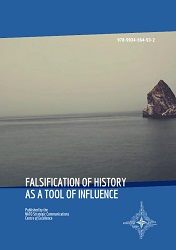Case Study: Estonia. Molotov-Ribbentrop Pact, World War II and Soviet Legacy
Case Study: Estonia. Molotov-Ribbentrop Pact, World War II and Soviet Legacy
Author(s): Vladimir Sazonov
Subject(s): Political history, Government/Political systems, International relations/trade, Crowd Psychology: Mass phenomena and political interactions, History of Communism, Fascism, Nazism and WW II, Politics of History/Memory
Published by: NATO Strategic Communications Centre of Excellence
Keywords: Estonia;Molotov-Ribbentrop Pact; World War II; Soviet legacy; history as a tool of influence; historical propaganda; Russia; foreign policy; historical facts; pro-Kremlin oriented historians;
Summary/Abstract: History can be used as a tool of influence as was highlighted in Annual Review 2014 of Estonian Internal Security Service; “historical propaganda plays a key role in justifying the actions and conquests of Russia’s aggressive foreign policy”. Russia has its own historical policy, which the Kremlin uses for achieving its goals. Various methods of using and (re)-interpreting or manipulation(s) historical facts and narratives are not a new phenomenon in the modern world, but in the 21st century they have become more significant in influencing target audiences. Several modern pro-Kremlin oriented Russian historians and even politicians are manipulating historical facts.
Book: Falsification of History as a Tool of Influence
- Page Range: 18-29
- Page Count: 12
- Publication Year: 2020
- Language: English
- Content File-PDF

